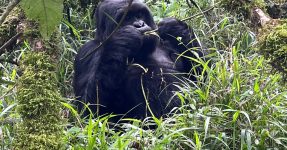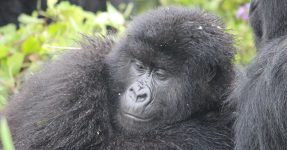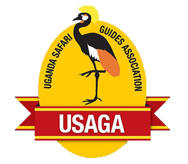A safari to Kenya is incomplete without the Mara River crossing experience. Each year, Kenya receives thousands of visitors who come primarily to witness the dramatic Mara River crossing. The Mara River crossing crowns East Africa’s annual Great Migration events. During the Kenya’s Mara River crossing, more than 1.5 million wildebeests cross to the Mara Reserve, and other mammals, including elands, topis, gazelles, and zebras, also accompany them.
The Great Mara River crossing involves a circular 800-1000km trek through the Serengeti-Masai Mara ecosystems. They first traverse the Ndutu plains and the Serengeti before crossing into the lush Masai Mara National Reserve/Park. To witness the actual Mara River crossings, you should have booked a tour to the Masai Mara Reserve. Timing is also essential if you are to witness East Africa’s vibrant Mara River crossing.
The Mara River crossing is dramatic in the sense that you have huge herds jump in the crocodile-infested river, plus the steep sides. Watching these mammals as they try to cross a river full of crocodiles, and on reaching the mainland, they encounter predators.

Where to witness the Mara River crossing?
The major Mara River crossing occurs at many points along the Mara River on the Serengeti end and in Kenya’s Masai Mara. On the Tanzanian side (Serengeti), spectacular river crossings occur at Lamai, located in the Northern Serengeti & adjacent to the Mara River.
The Mara River in Kenya is an iconic spot for the Masai Mara’s wildebeest migration. This river is located at the exact spot where the wildebeest migration path crosses the Mara-Serengeti ecosystem. The Mara River basin covers 13,504 sq. km, with over 65% in Kenya and Tanzania, and contains 35%.
The Mara River flows from Narok County, Kenya, and has its primary sources in the Kenyan highlands. It flows for over 395 km, originating from the Mau Escarpment and later emptying into Lake Victoria.
The Best Time for the Mara River Crossing
Witnessing the dramatic Mara River crossing requires timing it right. The best time to consider to planning your trip to the Masai Mara is from July to early September. The crossing may fluctuate as it can occur each day or not at all in some months of the year. This means you may need to spend more days to increase your chances of observing this spectacular event of a lifetime. On a good day, wildebeests take longer hours crossing the river. The presence of Nile crocodiles in the Mara River often disrupts angulate movement. Watching these mammals risk themselves can be mesmerising.
Why is the Mara River crossing dramatic?
The High Risk Taken
The Mara River is a significant obstacle to river crossings. It presents strong, unpredictable currents, muddy banks, and a large crocodile population. All these make the wildebeest crossing challenging and risky.
Epic scale
The intense wildebeest migration is best experienced during the Mara River crossing. Millions of wildebeests risk crossing the Mara River, and the entire journey is characterised by drama, survival, panic, and struggle.
Behaviors & Challenges
During the Mara River crossing, the resident animals and migrating herds showcase intricate behaviours. Large wildebeest herds often approach the river with caution. First, they assemble in huge numbers before setting foot into the river. They can spend longer hours/days around the riverbank trying to sense the danger/confusion. Any of they can initiate the actual movement, and others follow.
It is during such confusion and vulnerability that most predators and scavengers also act. After conquering the crocodile-infested river with some perhaps killed, crossing to the mainland also comes with another challenge. Several hyenas and lions can be lurking patiently along the riverbanks, targeting vulnerable and confused herds. The Mara River itself is hazardous, considering the hidden rocks and steep slopes, which can result in injuries/drowning. Most angulates fail to climb the distant steeps, and they end up being swept downstream/forced to get alternative crossings.
What impact does the Mara River crossing have?
Mara River crossing features a remarkable ecological impact. First, each year, 1000s of wildebeests die during the dramatic Mara River crossing due to injuries, drowning, or predation. The carcasses left on the riverbanks or water become a food source for most scavengers, including aquatic life in the river and birds like vultures. The natural recycling of the nutrients also enhances the productivity of the riverine system, thus helping sustain the grasslands on which most animals depend for food. The decomposed and broken materials from wildebeest remains return minerals to water and soils, thus completing the essential ecological cycle.
Valuable Tips for Successful Mara River Crossing
To experience the best of the Mara River crossing, you must plan carefully. Here are the top tips to consider if you are to observe the Mara River crossing.
Timing is critical: you should know when to travel to witness the River crossing. July to early October often offer a higher chance of observing the actual Mara River crossing than other months.
Pick the right site & accommodation: Do not book safari camps or lodges without knowing where the Mara River crossing occurs. Contact the expert –Native Africa Tours for adequate guidance on key accommodation options to consider for an overnight stay to enable you to take part in observing the river migration. Our team is familiar with lodges and camps near the Mara River for you to spend a night.
Embark on a tour with experienced guides: A professional guide makes your exploration more memorable. At Native Africa Tours, we pair each group of visitors with an expert with in-depth knowledge of wildlife behaviour and the best locations that guarantee incredible viewing opportunities.
Always exercise patience: Even in peak season, it is essential to maintain some level of patience. The patient ones often maximize their chances of witnessing the wildebeest herds as they cross the river.
Show respect to all wildlife: Try as much as you can not to display actions that can disturb the animal behaviours, including making loud noises and unnecessary car movements.
Where to Stay on Mara River Crossing Safari
Available lodges and camps to consider for overnight stay near the Mara River include the Mara Tented Lodge, Mara River Camp, and Singita Mara River Tented Camp. Other lodges in Masai Mara National Reserve include Mara Engai Lodge, Kichwa Tembo Tented Camp, Saruni Mara, Elephant Pepper Camp, Cottar’s 1920s Safari Camp, Sand River Masai Mara, Mahali Mzuri, and Angama Mara.
How to reach the Mara River
To reach the Mara River, first you must drive up to the Masai Mara Reserve. Considering the road conditions in remote places like the Masai Mara, a 4×4 safari vehicle is suitable for visitor navigation. Driving from Nairobi to the Masai Mara may take about 6 hours. The main access gates that can lead you to the Mara River include Talek Gate, Sekenani Gate, Musiara, and Oloololo Gate.
By air
If you are interested in the Mara River crossing, then take a flight from Nairobi to the Keekorok or Mara Serena Airstrips. These are the best airstrip options for you to experience the best of the Masai Mara’s Great Migration.
The Mara River crossing offers more than a mesmerizing wildlife encounter. A journey to witness this spectacle comes with more viewing opportunities that spark travel spirits. Book your trip now with an experienced expert on ground –Native Africa Tours.



















